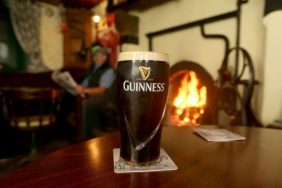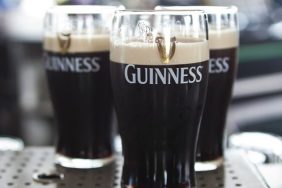The idea of “pouring the perfect pint” of Guinness Stout is not just some marketing gimmick sold to add elitism and prestige to the world famous ale. It’s an art form the top minds behind the Irish brew take with almost religious devotion.
During a recent tour of the Guinness Storehouse in Dublin, Master Brewer Fergal Murray led a group of thirsty reporters into a side room of the brewery’s Perfect Pint Bar for a special lesson in the pouring and presentation of a Guinness. While there are often lessons in this proper technique taught around the world in pubs on any given day, it was a special honor to have one of the men most directly responsible for the creation of modern Guinness showing us how to best serve the product to which he devoted his life.
According to Murray, Guinness has a global operation underway to make sure the ale is brewed, bottled, stored, transported and served to precise specifications. Guinness wants a beer drinker in Africa to enjoy the same ale as a veteran in Dublin.
To that end, since many pubs don’t always’ properly clean their taps and lines, Guinness offers their own cleaners as part of their distribution service to make sure the ale makes it to the glass in pristine order.
Meanwhile, that glass better be clean. Murray explained that a drink of Guinness from a clean glass of Guinness not only ensures proper taste, but it should leave rings from the head documenting the number of drinks and amount of ale consumed. A properly ringed glass shows you’re drinking in a proper pub with pristine glassware. Guinness designed their branded pint glasses to fit the hand comfortably and to allow for the proper settling of the nitrogen bubbles in the ale that gives the brew its head.
To begin the proper pour, the wise bartender should hold the Guinness glass at a 45 degree angle with the Harp logo resting in the palm of the hand (with four fingers around the Harp) and the “Guinness” text facing upward. The tap spout should be about the length of a finger nail from the glass – never touching and never allowing for too much travel time between ale and glass that might alter carbonation.
Ale should fill the glass from the flowing tap – with the valve wide open. Let the red brown delicacy flow. Without leveling the glass, fill the pint to the forward facing edge and stop. The glass should be set down on the bar (not served) as the cascade of nitrogen bubbles churns through the ale and the head settles to the top of the glass.

Murray insists that the glass should rest for 119.5 seconds. Not 2 minutes. That’s what’s in my notes. I’m sticking to it, and I’m not arguing with the master brewer. Once the head settles and reveals the remaining inch or so of empty space in the pint glass, a final careful slow pour – using a deft touch on the tap – will fill the pint until a gently sloping dome of gray foam domes over the edge of the glass (without spilling, of course).
Since visiting pubs and responsibly enjoying a pint is part of Murray’s job, he’s acutely aware when a pub or individual bartender isn’t pouring or presenting their Guinness pints properly. It’s a judgement call whether Murray steps forward to identify himself and put the pouring to right.
“I offer to help in a diplomatic manner,” Murray said. “Sometimes they respond well, and sometimes I leave hoping they learn.”






